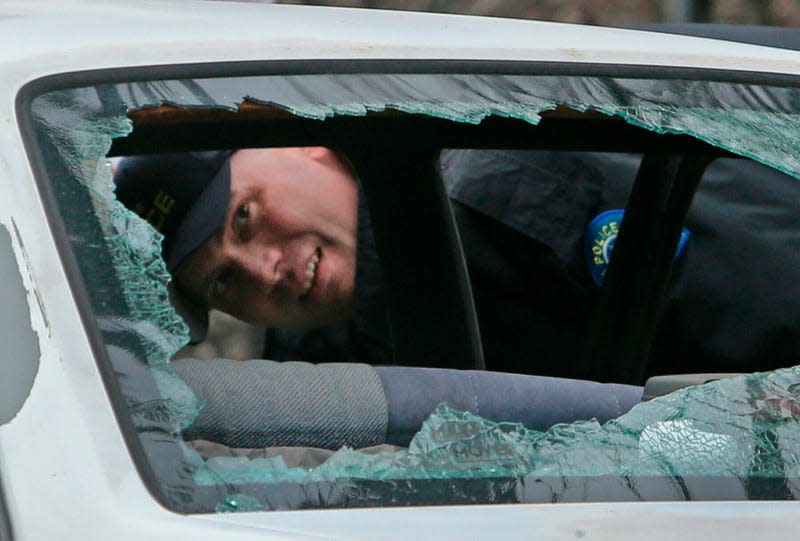A Detroit Reporter Invented the Term 'Carjacking' to Describe a New Kind of Crime Wave

Every decade, a new kind of crime comes along, and our language needs to catch up to our reality — think hacking, or before that, identity theft. In the early ’90s, Detroit journalists needed a whole new term for an old type of crime that was gripping the city: A blend of armed robbery and car theft. And so, “carjacking” was born.
This portmanteau of “car” and “hijacking” was created by legendary Detroit News crime reporter Scott Bowles in 1991, but the crime existed well before the name. Before the ’90s, most police departments didn’t specifically track crimes that involved stealing a car while the driver was operating it. States put such crimes into two categories: car theft or armed robbery, according to the New York Times.
Read more
In Michigan, such crimes were referred to under the 1931 penal code as RAUDAA; Robbery, Armed, Unauthorized Driving Away of an Automobile. It doesn’t really trip off the tongue. So when a rash of such crimes swept through the country and, particularly, the economically depressed city of Detroit in the early ’90s, reporters needed a more descriptive shorthand term.
After much brainstorming, Bowles and his editors finally settled on “carjacking.” The term first appeared in a 1991 report on a fatal carjacking, according to a 2017 article from the News:
The Detroit News is credited with coining the term “carjacking” in a 1991 story about a 22-year-old drugstore cashier, Ruth Wahl, who was killed when she refused to give up her SUV. Michigan’s carjacking law, adopted in 1994, mandates up to life in prison for a vehicle thief who also commits “violence or the threat of force or violence, or who puts (the vehicle owner) in fear.”
The FBI and most other police departments do not separate carjackings from other robberies when tallying crime statistics. Detroit was once thought to have the highest number of carjackings in the U.S., although according to reports, Baltimore had 402 carjackings last year, 23 more than Detroit. Baltimore also has fewer residents: 622,000 to Detroit’s 680,000.
After that first published reference, the term caught on like wildfire, as Bowles told the Detroit podcast Created Equal in 2016.
“A few days later, Ted Koppel used the word ‘carjacking.’ And that was it,” Bowles told the podcast. “When the feds made it a federal crime... now you see it everywhere.”
Bowles grapples with the complicated consequences of coining this new term on the Created Equal podcast. The term was later used as a way to create new fears among white suburbanites about inner-city Black populations, and played a role in the rise of the “superpredator” myth.
In reality, it’s often young people who commit the crime, usually for mundane reasons: Boredom, opportunity or the very basic need to get from point A to point B, like the group of Detroit kids who, armed with BB guns, carjacked drivers simply so they wouldn’t have to walk to school in the snow, according to the News.
Spates of carjackings still bubble up across the country. In 2013, Detroit’s Chief of Police was nearly carjacked on one of Detroit’s main drags while driving a police cruiser. He later advised residents to run red lights when driving through the more deserted parts of the city at night. But since the ’90s, the crime has slowly fallen out of favor. Nonfatal carjackings declined 78 percent from 1995 to 2021, according to the Bureau of Justice Statistics (fatal carjackings are typically categorized as homicides; nonfatal carjacking statistics are gathered by interviewing the victim.)
But times, they are changing once again. Last year in particular, carjackings seemed to be on the upswing, at least anecdotally, according to a report from the New York Times in 2022:
In the strange math of the past two pandemic years, as different kinds of crime have spiked and plummeted, carjacking has made an alarming resurgence. The number of reported incidents nearly quadrupled in Philadelphia from 2019 to 2021 and is on track to double this year; Chicago had more than 1,900 carjackings last year, the highest number in decades. Two months into 2022 the number of armed carjackings in New Orleans was already at two-thirds the whole year’s tally in 2019. Washington, D.C., where 426 carjackings were reported last year, is not an exception.
There are reasons carjacking may have begun proliferating even as robbery rates dropped in 2020: Push-button ignitions have made it harder to operate cars without getting the keys from the driver; supply chain problems boosted the price of used cars as millions found themselves in economic straits; and the pandemic ushered in an army of delivery workers, often stopping in unfamiliar neighborhoods. Ride-share drivers, the police said, have been summoned, then robbed on arrival.
Considering certain segments of our media and politics are currently obsessed with a non-existent rise in violent, non-homicidal crimes, however, I’d take this report with a grain of salt.
The best way to survive a carjacking is to hand over the vehicle — no car is worth a tussle with a scared, amped up, armed teenager with poor decision-making abilities. Staying off your phone, avoiding distraction and remaining aware of your surroundings cam all help you avoid being robbed in such a manner. Whatever you do, don’t attempt to do what so-called TikTok self-defense gurus tell you.
More from Jalopnik
Sign up for Jalopnik's Newsletter. For the latest news, Facebook, Twitter and Instagram.

 Yahoo Autos
Yahoo Autos 